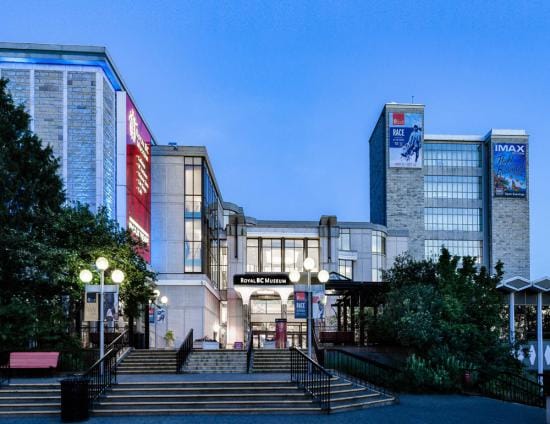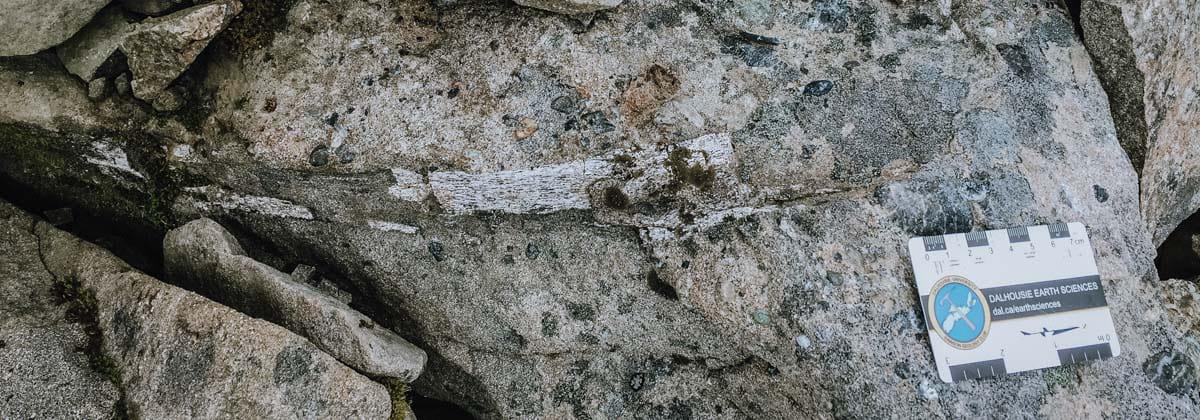
Modernization
Learn more about government’s intention to modernize the museum to protect our historic holdings and provide better access to our collections.

Research interests
Dr. Arbour is a vertebrate palaeontologist specializing in the evolution and palaeobiology of dinosaurs.
In addition to uncovering the dinosaurs of northern BC, she is a leading authority on the armoured dinosaurs called ankylosaurs. She also studies the evolution of animal armour and weaponry, and the biogeography of Cretaceous-aged dinosaurs in western
North America and Asia.
Despite British Columbia’s rich fossil heritage, very little is known about the dinosaurs that once roamed this province, in part because many of the areas that preserve rocks of the right age and type to contain dinosaur fossils are in extremely remote locations in the northern part of BC. A particularly promising region in British Columbia for dinosaur fossil discoveries is a geological feature known as the Sustut Basin, which preserves ancient riverside environments from the Cretaceous Period (about 100 to 66 million years ago). British Columbia’s first unique dinosaur species, the recently named Ferrisaurus sustutensis, was found in the southern part of the Sustut Basin along the Sustut River in 1971. Finding more fossils in the southern Sustut Basin will be difficult because most of the exposed rocks are along riverbanks in forested areas. However, the northern part of the Sustut Basin, especially in Spatsizi Plateau Wilderness Provincial Park, has vast expanses of rocks exposed in alpine areas above the tree line. “Dinosaurs of the Spatsizi Plateau” explores this remote and beautiful part of British Columbia, hopefully revealing more about the ancient inhabitants of our province.
“Dinosaurs of the Spatsizi Plateau” has its roots in mineral exploration during the 1970s, when the geologist Kenny Larsen found the bones of what would eventually be identified as Ferrisaurus sustutensis, British Columbia’s first unique dinosaur species along the Sustut River. Curator of palaeontology Dr. Victoria Arbour returned to this region in 2017 during her postdoctoral fellowship at the Royal Ontario Museum, finding examples of fossil plants and a turtle and learning more about the environment that Ferrisaurus lived in. Although this was a successful expedition, the lushly forested river valleys make the Sustut River a challenging area to search for dinosaur fossils—there aren’t enough rocks!
In 2013, curator of botany Dr. Ken Marr was collecting and documenting alpine plants in Spatsizi Plateau Wilderness Provincial Park when he came across an exciting discovery – a shiny, serrated tooth that can only have come from a tyrannosaurid dinosaur. The Spatsizi Plateau has many more rocks exposed at the surface because it is located above the treeline, increasing the odds that palaeontologists will find fossils in this area. In 2019, Dr. Arbour led an expedition to return to Spatsizi Plateau Wilderness Provincial Park to search for more fossils like this dinosaur tooth, joined by former palaeontology collections manager Jaclyn Richmond and colleague Dr. Thomas Cullen, then at the Field Museum. Field sites in the park can only be accessed by helicopter, so the team had to travel light.
After several days hiking around the first area of interest and finding only fossil plants (no dinosaurs), the team switched to a new site a few kilometres away. Within a few hours, we had found a handful of bones, including a big dinosaur rib. It was a great afternoon and the team was looking forward to collecting some exciting specimens, but nature had other plans—the next day it rained, and the day after that it snowed (in August!) for more than a day, putting an end to the expedition. We are excited about what we might find the next time we are able to return to the Spatsizi Plateau!
This exploratory field research will collect and document new dinosaur fossils, which may include new occurrences of species found elsewhere in North America or new species that are unique to BC. The dinosaurs found on the Spatsizi Plateau may be as young as 67 to 68 million years old, putting them within 1 to 2 million years of the asteroid impact that caused a catastrophic mass extinction and marked the end of the age of dinosaurs. Fossils from the Spatsizi Plateau can provide important information about dinosaur ecosystems and how they were changing prior to the mass extinction.
Fossils are protected in British Columbia under the Fossil Management Framework, and expeditions like “Dinosaurs of the Spatsizi Plateau” require permits from either BC Parks or the BC Fossil Management Office. We are grateful to BC Parks for supporting this work by granting a park use permit to Dr. Arbour.
Natural Sciences and Engineering Research Council
BC Parks
| Article | Authors |
|---|---|
| “A New Leptoceratopsid Dinosaur From Maastrichtian-Aged Deposits of the Sustut Basin, Northern British Columbia, Canada.” PeerJ 7 (2019): e7926. | Arbour, Victoria M. and David C. Evans. |
| "Cretaceous Flora and Fauna of the Sustut Group Near the Sistut River, Northern British Columbia, Canada." Canadian Journal of Earth Sciences 57 (2020); 671–680 | Arbour, Victoria M., David C. Evans, D. Jade Simon, Thomas Cullen, and Dennis R. Braman. |
| “An Ornithischian Dinosaur from the Sustut Basin, North-Central British Columbia, Canada.” Canadian Journal of Earth Sciences 45 (2008) 457–463 | Arbour, Victoria M. and Milton Graves. |
| Links |
|---|
| Royal BC Museum Learning Portal – BC’s Mountain Dinosaur |
| BC Fossil Management Framework |
| Spatsizi Plateau Wilderness Provincial Park |